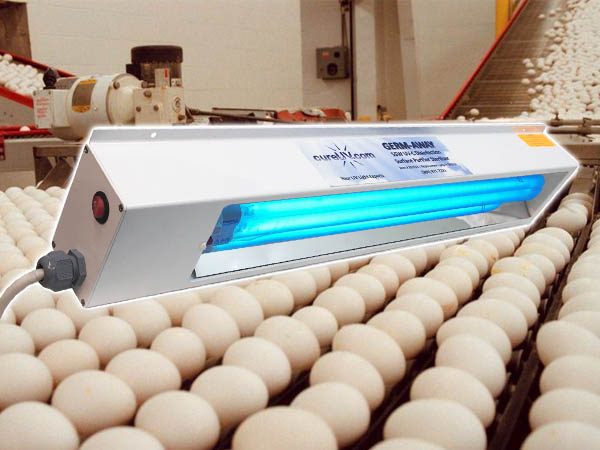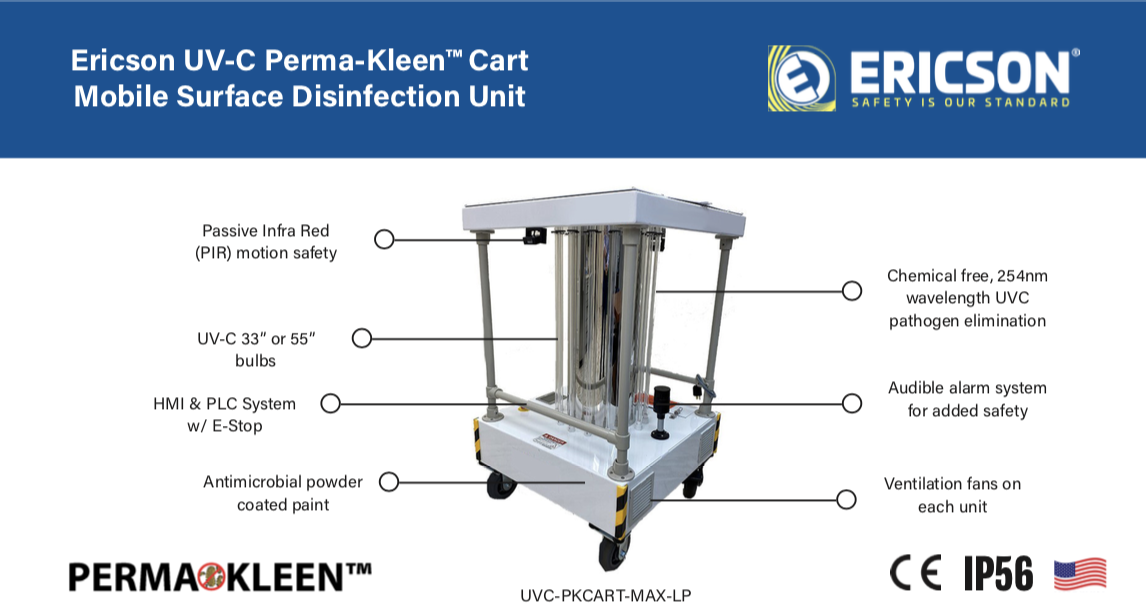Introducing the Perks of UV Disinfection: Making Sure Disinfected and tidy Rooms
In the age of heightened recognition surrounding hygiene and cleanliness, the relevance of effective disinfection approaches can not be overemphasized. While conventional cleansing approaches have actually long been trusted, developments in technology have actually presented an ingenious solution that ensures clean and sanitized rooms: UV disinfection. By using the power of ultraviolet light, this approach has actually gotten recognition for its capability to eliminate harmful pathogens and supply a comprehensive sanitization procedure. However, the advantages of UV sanitation prolong far beyond its effectiveness. This conversation will check out the scientific research behind UV disinfection, its efficiency on numerous microorganisms, its applications in different setups, and the advantages it holds over typical techniques. In addition, we will certainly look into the security considerations that should be thought about when executing UV disinfection. Prepare to uncover a brand-new dimension of sanitation and discover the untapped possibility of UV disinfection.

The Scientific Research Behind UV Disinfection
UV sanitation is a medically tested method that utilizes ultraviolet light to get rid of harmful microbes from surfaces and water. The scientific research behind UV disinfection hinges on the capacity of UV-C light to damage the DNA and RNA of microbes, rendering them unable to duplicate and causing their ultimate death. UV-C light drops within the wavelength variety of 200 to 280 nanometers, which is very effective in damaging microorganisms, infections, and various other virus.
When subjected to UV-C light, the hereditary material of microorganisms absorbs the energy from the light, resulting in the formation of thymine dimers. These dimers interfere with the regular replication and transcription processes of the bacteria, hindering their ability to make it through and duplicate (uv surface disinfection). The DNA and RNA damage brought on by UV-C light is deadly to the microorganisms, making UV sanitation a trusted and efficient approach for killing a wide variety of virus
UV sanitation is especially valuable in environments where typical chemical anti-bacterials might be inefficient or impractical. It is a non-chemical method that does not leave any deposits or dangerous by-products, making it risk-free for usage in food processing, medical care centers, water treatment plants, and different other industries. UV disinfection is ecologically friendly, as it does not add to the advancement of antibiotic-resistant microorganisms or various other hazardous toxins.
Efficiency of UV Sanitation on Virus
The effectiveness of UV disinfection in getting rid of microorganisms has actually been extensively examined and confirmed in numerous scientific researches. UV radiation has the ability to suspend a variety of bacteria, including infections, microorganisms, and fungi, by harming their DNA or RNA. This stops them from replicating and causing infections.
One research released in the American Journal of Infection Control located that UV sanitation worked in reducing the existence of multiple drug-resistant bacteria in healthcare facility spaces. Another research carried out by the National Institute for Occupational Security and Health and wellness demonstrated that UV sanitation had the ability to remove 99.9% of the flu infection on surface areas.
UV sanitation has actually likewise shown guarantee in combating the spread of healthcare-associated infections (HAIs) According to a research published in The Lancet, using UV-C light along with basic cleansing protocols considerably reduced the occurrence of HAIs in a health center setting.
Moreover, UV disinfection has shown to be effective against arising pathogens, such as the severe intense respiratory disorder coronavirus 2 (SARS-CoV-2), which triggers COVID-19. A research carried out by the National Emerging Infectious Conditions Laboratories demonstrated that UV-C light can suspend the infection on surfaces within secs.
Applications of UV Disinfection in Different Setups
With its proven effectiveness in removing microorganisms, UV sanitation has actually located applications in a selection of settings. One of one of the most typical areas where UV sanitation is used is in health care centers. UV technology is utilized to sanitize individual areas, operating rooms, and various other high-touch surfaces, lowering the risk of healthcare-associated infections. In enhancement, UV disinfection is likewise being executed in food processing plants and restaurants to make sure the safety and security of food and stop the spread of foodborne health problems. UV sanitation is additionally advantageous in water treatment plants, where it is utilized to eliminate dangerous bacteria and provide safe alcohol consumption water.
Another vital application of UV sanitation impends purification market. UV air purifiers are utilized in residential, commercial, and industrial settings to eliminate airborne bacteria, infections, and mold and mildew spores. This technology is particularly valuable in environments where individuals are more vulnerable to respiratory infections, such as medical facilities, colleges, and office complex.
Moreover, UV disinfection is increasingly being utilized in public Extra resources transport systems, such as buses and trains, to maintain clean and sterilized spaces for passengers. UV light is employed to sanitize surface areas and air inside the automobiles, minimizing the danger of spreading transmittable illness.
Benefits of UV Sanitation Over Standard Methods
In contrast to typical approaches, UV sanitation supplies a series of distinct benefits that make it a better option in numerous markets and setups. One substantial advantage is its performance against a vast variety of microbes, consisting of infections, fungi, and germs. Unlike chemical anti-bacterials that may have restricted click to read efficiency against particular microorganisms, UV disinfection is a non-selective procedure that can eliminate or inactivate a wide spectrum of harmful organisms.
One more benefit of UV sanitation is its ability to provide efficient and quick disinfection. Typical disinfection approaches typically need longer call times or several steps to accomplish the desired level of disinfection. In contrast, UV light can supply prompt and continuous sanitation, lowering downtime and increasing efficiency in numerous applications.
UV sanitation also supplies a eco pleasant and risk-free choice to standard sanitation techniques. uv surface disinfection. Unlike chemical agents, UV light does not leave behind any kind of hazardous deposits or spin-offs, making it suitable for usage in sensitive environments such as food handling facilities, health care settings, and water therapy plants
Furthermore, UV sanitation is a cost-efficient solution over time. While the upfront investment for UV sanitation systems might be more than conventional methods, the functional prices are usually reduced. UV lights have a lengthy life expectancy and call for marginal maintenance, resulting in lowered labor and substitute prices.
Security Considerations for UV Disinfection
Considering the possible threats related to UV disinfection, it is vital to deal with the safety factors to consider associated with executing this innovation. UV sanitation uses ultraviolet light to eliminate or suspend microorganisms, making it a reliable method for disinfecting different surface areas and items. Nonetheless, it is crucial to understand that UV radiation can likewise posture risks to human health and wellness if appropriate safety and security measures are not complied with.
Firstly, straight exposure to UV radiation can cause harm to the skin and eyes. Extended exposure can cause sunburn, skin damages, and also a raised threat of developing skin cancer. It is critical to ensure that UV disinfection systems are appropriately enclosed and geared up with safety attributes such as automated shut-off devices or movement sensors to avoid unintentional exposure.

Furthermore, correct training and education and learning are necessary for those in charge of running UV sanitation systems. They ought to recognize the possible dangers, understand the safety and security procedures, and know just how to deal with and Read Full Article maintain the equipment appropriately.
Final Thought
Finally, UV sanitation provides countless advantages in making sure tidy and sanitized rooms. Its performance in getting rid of microorganisms has actually been shown through clinical research. UV sanitation can be applied in different setups, including health care centers, food handling plants, and water treatment systems. Compared to standard approaches, UV disinfection has advantages such as faster disinfection times, very little chemical usage, and no harmful by-products. Safety and security considerations should be taken into consideration to avoid potential dangers linked with UV exposure.
UV sanitation is a scientifically tested method that uses ultraviolet light to remove damaging microorganisms from surfaces and water. The DNA and RNA damage caused by UV-C light is lethal to the microorganisms, making UV sanitation a trusted and effective approach for eliminating a broad range of pathogens.
Another advantage of UV disinfection is its capability to supply reliable and fast disinfection. UV disinfection utilizes ultraviolet light to eliminate or suspend microbes, making it a reliable approach for sterilizing different surfaces and items. Compared to conventional methods, UV disinfection has advantages such as faster disinfection times, minimal chemical usage, and no unsafe results.